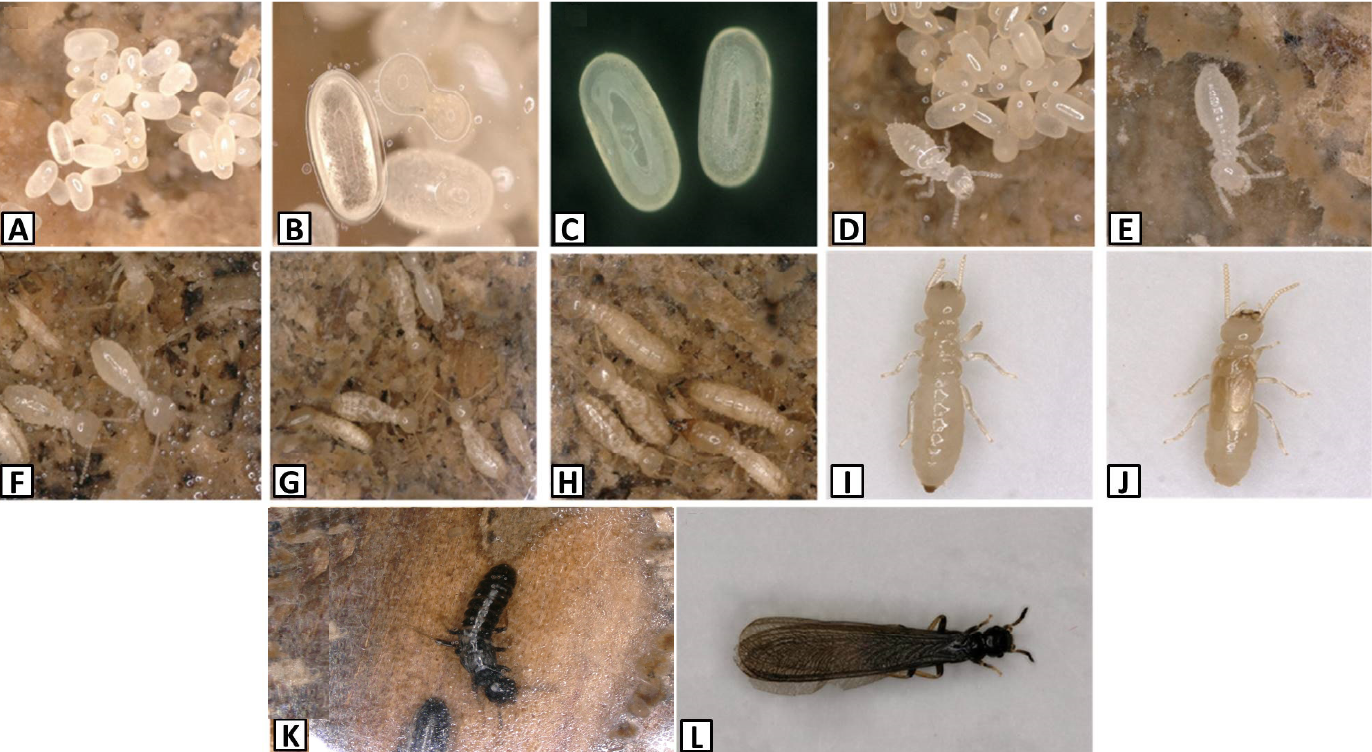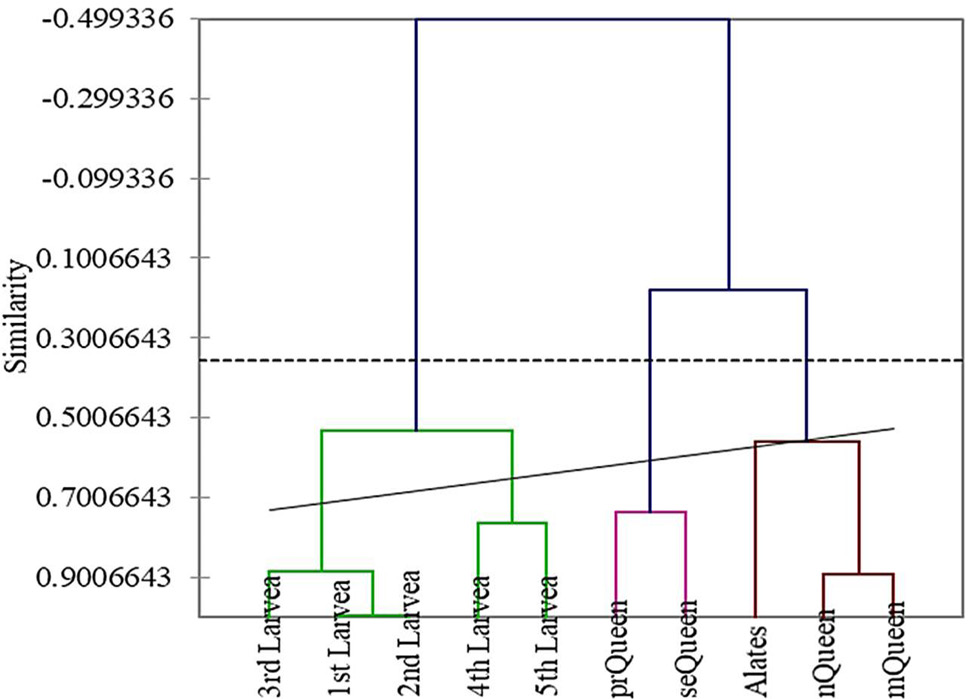Breeding Biology of Reticulitermes aculabialis (Isoptera: Rhinotermitidae)
Breeding Biology of Reticulitermes aculabialis (Isoptera: Rhinotermitidae)
Haroon1, Chen-Xu Ye1, Yu-Xin Li1, Hong-Xin Zhang1, Qing Liu1, Xiao-Hong Su1,2,3 and Lian-Xi Xing1,2,3,*
A, the comparison of mean live weight (g) of the worker, new reproductive worker (nrworker), mature reproductive worker (mrworker), neotenics and queen; B, the comparison of mean live weight (g) of the worker, new reproductive worker (nrworker), mature reproductive worker (mrworker), new king (nKing) and mature king (mKing); C, the comparison between the total length of different species and the mean of the testis; D, the comparison between the total length of different species and mean of ovary length.
The life cycle of R. aculabialis: A, cluster of termite eggs; B, cell division in termite eggs; C, the primitive streak; D, 1st instar nymph; E, 2nd instar nymph; F, 3rd instar nymph; G, 4th instar nymph; H, primary reproductive; I, neotenics; J, mature neotenics K, newly reproductive male and female Alates; L, swarmer alate.
Principal component analysis (PCA) dimension (F1 and F2) represent the horizontal (F1) and vertical (F2) factor analysis of primary and secondary male (A) and female (B) reproductive gonads.
The similarity, proximity matrix (Pearson correlation coefficient). The bar indicates the longevity.













